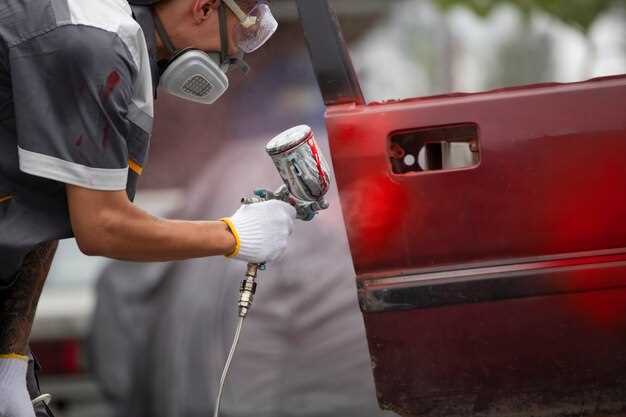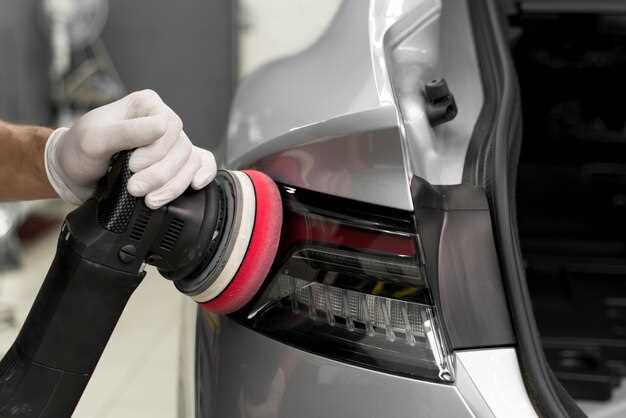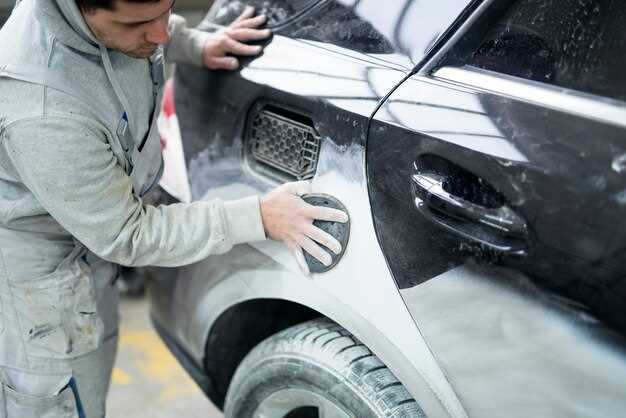
Scratches on your car can be frustrating, not only because they mar the aesthetic appeal but also because they can lead to further damage if left untreated. Whether it’s a minor scratch from a shopping cart or deeper scratches caused by an unfortunate encounter with another vehicle, addressing these imperfections is crucial for maintaining the integrity of your car’s paint job.
Fortunately, removing scratches from car paint does not always require professional help. With a few simple techniques and readily available products, you can restore your car’s finish and enhance its overall appearance. Understanding the type and depth of the scratches is the first step in determining the appropriate method for removal.
This article will explore various ways to effectively tackle scratches, ranging from DIY solutions to commercial products designed for car care. By following these simple methods, you can help ensure that your car maintains its beauty and value for years to come.
Identify the Type of Scratch on Your Car

Before attempting any repair on your car’s paint, it’s essential to accurately identify the type of scratch you are dealing with. Scratches can generally be categorized into three levels: clear coat scratches, base coat scratches, and deep scratches.
Clear coat scratches are the most superficial, affecting only the top layer of paint. These scratches are often caused by minor abrasions, such as tree branches or car wash brushes. They are usually easily repairable using polishing compounds or scratch removers specifically designed for clear coat finishes.
Base coat scratches penetrate deeper and affect the paint color layer beneath the clear coat. These scratches might be the result of more significant impacts, like stones or accidental brushes against rough surfaces. For these scratches, it’s advisable to use touch-up paint that matches your car’s color, applying it carefully to ensure a seamless repair.
Deep scratches reach through both the clear coat and base coat, exposing the primer or even the metal underneath. These types of scratches require more extensive repair methods. It may involve sanding the affected area, applying primer, and then painting, followed by a clear coat for protection. It’s crucial to address deep scratches promptly to prevent rust and further damage to your car.
By accurately identifying the scratch type, you can choose the appropriate repair method, ensuring your car’s paint remains in excellent condition.
Home Remedies for Minor Scratches
Minor scratches on your car’s paint can be unsightly, but there are several home remedies that can help you repair them without the need for professional intervention. One effective method involves using baking soda. Mix two parts baking soda with one part water to create a paste. Gently rub this paste onto the scratched area using a soft cloth, then wipe it off with a clean, damp cloth. This can help to blend the scratch with the surrounding paint.
Another common remedy is toothpaste. Use a non-gel toothpaste that contains baking soda, and apply a small amount to a clean, soft cloth. Gently buff the scratched area in a circular motion for a few minutes, then clean off the residue with a damp cloth. The mild abrasiveness of toothpaste can help remove superficial scratches.
For deeper scratches, consider using a mixture of vinegar and olive oil. Combine one part vinegar with three parts olive oil in a small bowl. Apply this solution to the scratch with a microfiber cloth and gently work it into the paint. This not only helps to conceal the scratch but also provides some conditioning to the car’s finish.
If the scratches are particularly stubborn, rubbing compound can be a useful household item. Apply a small amount to a soft cloth and rub it into the scratch using a circular motion. Be cautious not to use too much pressure, as this could damage the surrounding paint. Follow up with a wax application to protect the area and restore shine.
Always remember to wash and dry the scratched area thoroughly before attempting any repairs. Testing any method on a small, inconspicuous area first is also recommended to ensure the car’s paint responds well to the chosen remedy.
Using DIY Scratch Removal Kits
DIY scratch removal kits offer an effective and convenient solution for repairing minor scratches on your car’s paint. These kits typically include various products such as scratch repair solutions, polishing compounds, and microfiber cloths, designed to help you restore your vehicle’s finish.
Before using a DIY kit, it’s essential to thoroughly clean the affected area with soap and water to remove any dirt or debris. This step ensures that you don’t cause further damage during the repair process. Once the surface is clean, assess the depth of the scratches. Superficial scratches can usually be removed easily with just a rubbing compound, while deeper ones might require a more comprehensive approach.
Follow the instructions provided in the kit for the best results. Many kits include a step-by-step guide that walks you through the application process. Generally, you will apply the scratch remover directly to the affected area, allowing it to penetrate the scratch. Afterward, use a microfiber cloth to buff the area gently, bringing back the shine to your car’s paint.
In addition to removing scratches, some kits also help in protecting the paint. Look for options that include a protective wax or sealant to safeguard against future marks and enhance the luster of your vehicle. Regular use of these products can prolong the life of your car’s finish and keep it looking new.
DIY scratch removal kits can be found at auto parts stores or online, providing a cost-effective way to maintain your car’s aesthetics without needing to visit a professional. With a little effort and the right tools, you can effectively address scratches and keep your car looking pristine.
When to Consider Professional Repair Services
While many scratches on car paint can be handled with DIY methods, there are instances where professional repair services should be considered. These situations often involve deeper damage or require specialized techniques that go beyond basic touch-up methods.
| Situation | Reason for Professional Repair |
|---|---|
| Deep Scratches | When scratches penetrate the clear coat and reach the base paint or metal, professional tools and expertise are needed to restore the car’s original finish properly. |
| Multiple Scratches | If there are several scratches in different areas, a professional can assess the overall condition and offer comprehensive repair solutions, ensuring a uniform appearance. |
| Color Matching Issues | Professionals have access to advanced color matching technologies that can accurately blend repaired areas with the original paint, making the damage nearly invisible. |
| Insurance Claims | When dealing with insurance claims for extensive damage, professional services may be required to document the repair process and ensure quality standards are met. |
| Time Constraints | If you need the car ready quickly, professionals can expedite repairs using their equipment and experience, saving you time versus DIY methods. |
In conclusion, assessing the severity of the scratch and the desired outcome is crucial. If the damage exceeds basic surface scratches, seeking professional repair services is highly advisable to ensure longevity and maintain the car’s aesthetic value.
Prevention Techniques to Avoid Future Scratches
To maintain your car’s appearance and value, implementing effective prevention techniques is crucial to avoid scratches. One of the simplest methods is to park in designated areas, away from heavy foot traffic or crowded parking lots. This minimizes the risk of unintentional contact with shopping carts and other vehicles.
Utilizing car covers can provide an additional layer of protection against environmental factors, including branches, debris, and even bird droppings that can lead to scratches. Choose a high-quality cover tailored to your vehicle for optimal results.
Regularly applying a wax coat can significantly reduce the chances of scratches forming. Wax creates a barrier that shields the paint from minor abrasions and environmental contaminants. Aim to wax your car every few months to maintain its protective layer.
Consider a paint protection film (PPF) that acts as a shield against physical damage. This transparent layer adheres to your car’s surface and absorbs impacts, preventing scratches from occurring in the first place.
Always use soft, microfiber cloths when cleaning or drying your car. Avoid rough materials that can inadvertently scratch the paint. Additionally, wash your car regularly to remove dirt, which can cause friction and lead to scratches over time.
Lastly, maintaining a safe distance from other vehicles and obstacles while driving and being mindful of your surroundings can significantly reduce the risk of scratches. By incorporating these techniques into your routine, you can effectively protect your car’s surface and keep it looking pristine.
Maintaining Your Car’s Paint After Scratch Removal

After successfully repairing scratches on your car’s paint, it is essential to adopt proper maintenance practices to keep the finish looking pristine. Here are several effective strategies to ensure long-lasting protection and shine:
- Regular Washing: Clean the car regularly using gentle car wash soap and a soft sponge. Avoid automatic car washes with abrasive materials that can further damage the paint.
- Waxing: Apply high-quality car wax every few months. Wax provides a protective barrier against environmental elements and helps maintain the shine of the paint.
- Use Clay Bar: Consider using a clay bar treatment to remove contaminants once or twice a year. This process enhances the smoothness of the paint and prepares it for waxing.
In addition to these practices, consider the following tips for optimal paint care:
- Avoid Sun Exposure: Whenever possible, park your car in the shade or use a car cover to minimize sun damage that can fade and deteriorate the paint over time.
- Immediate Spot Cleaning: Address any new spots or grime on the surface immediately to prevent scratches and damage from becoming more pronounced.
- Sealants: Invest in paint sealants that provide long-lasting protection, offering a stronger defense against environmental pollutants compared to wax alone.
By following these maintenance steps, you can ensure that your car’s paint remains vibrant and well-protected long after the scratch removal process. Regular attention and care will not only enhance the car’s appearance but also preserve its value.
